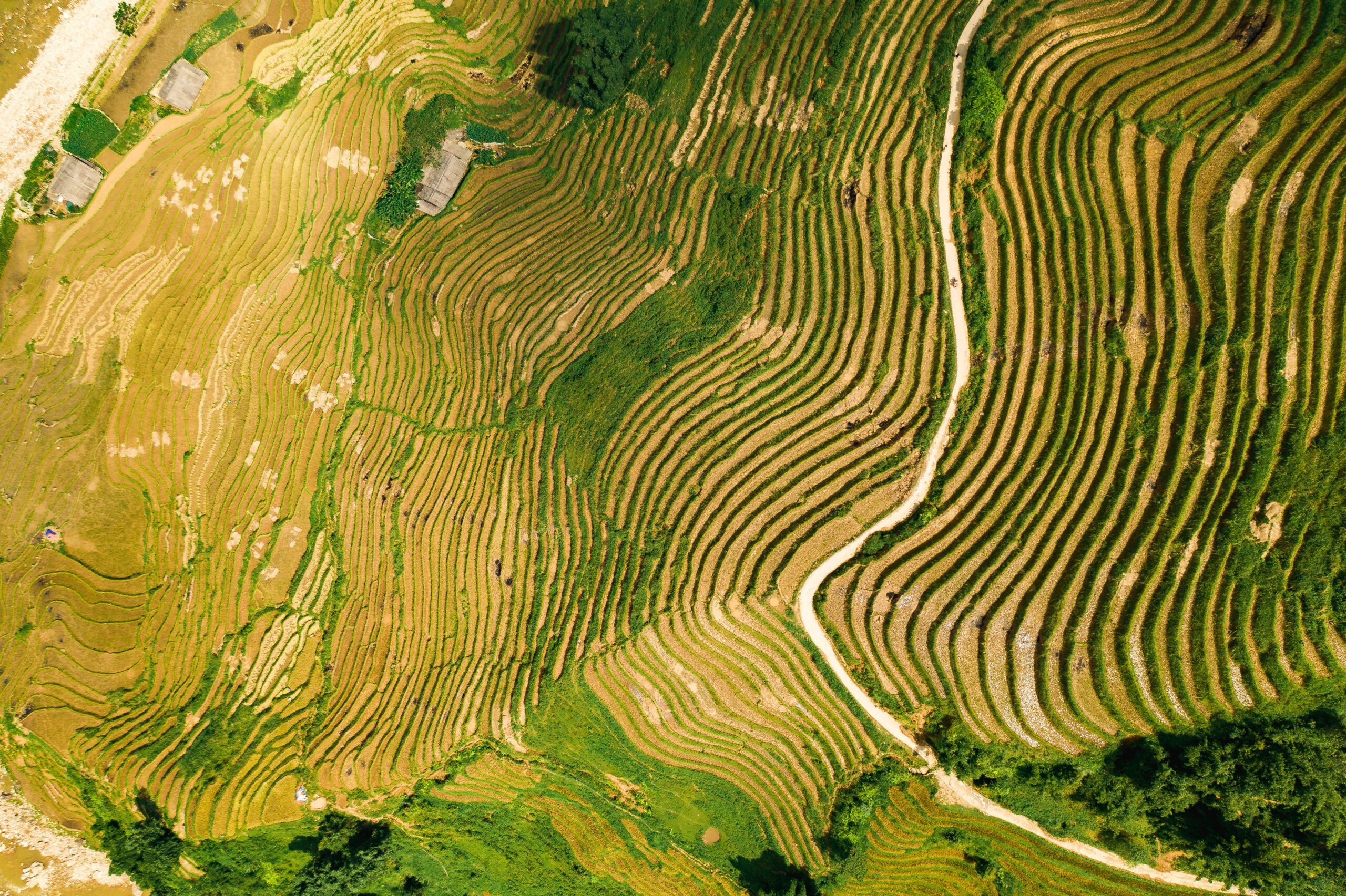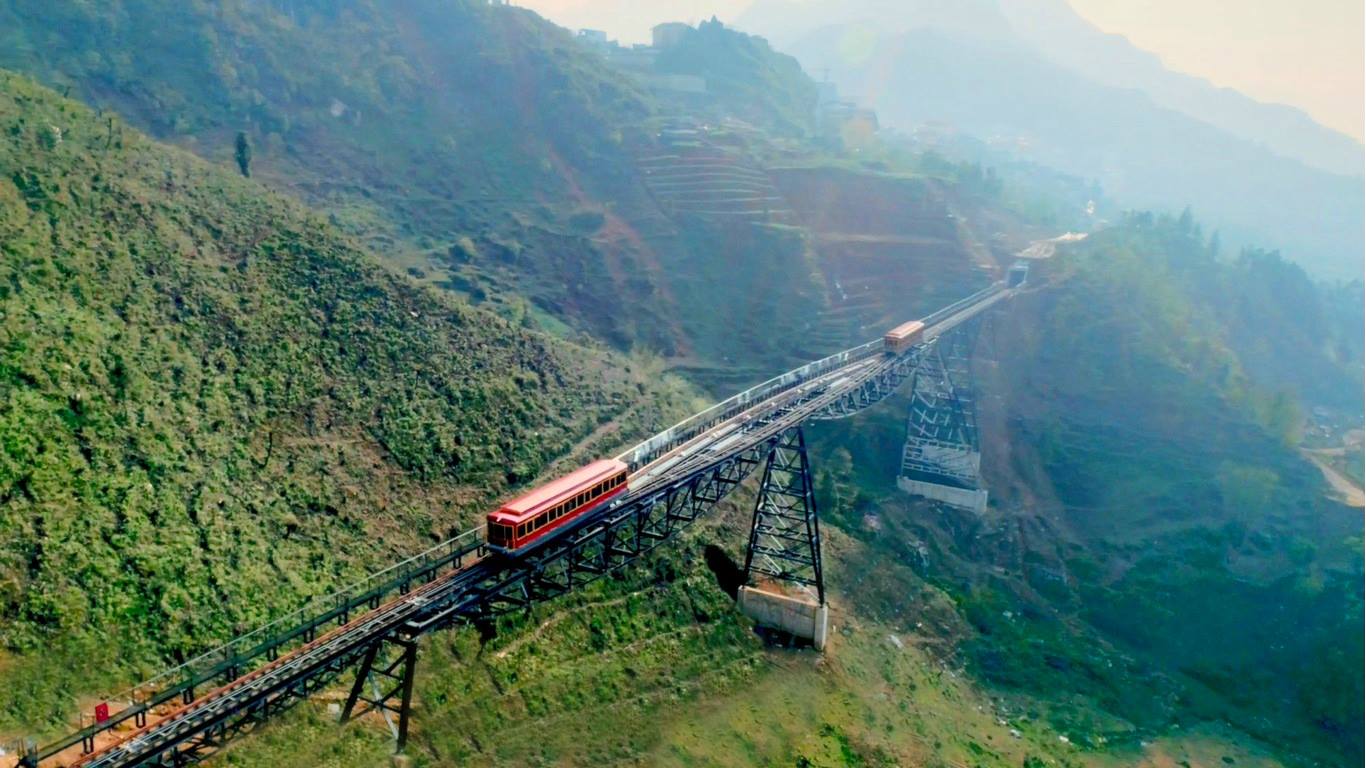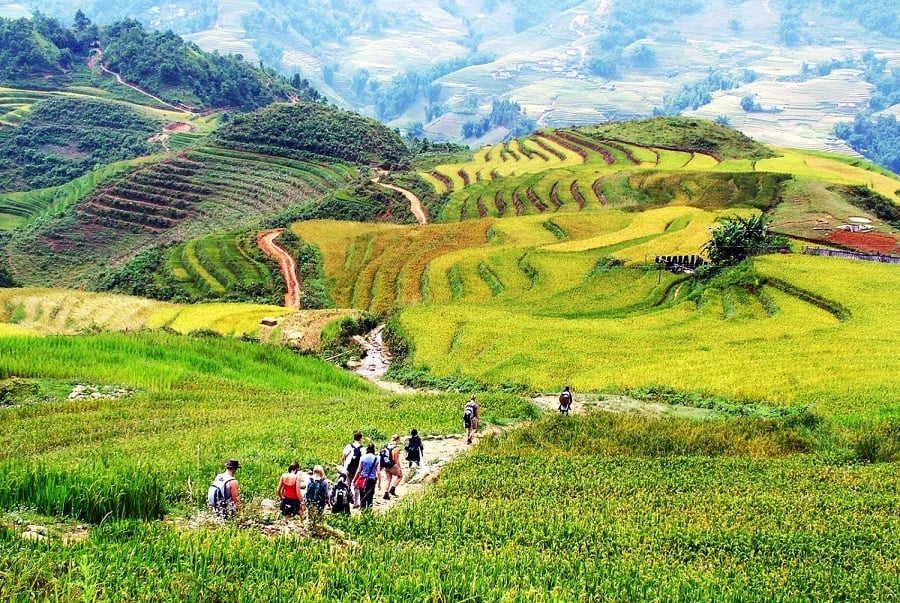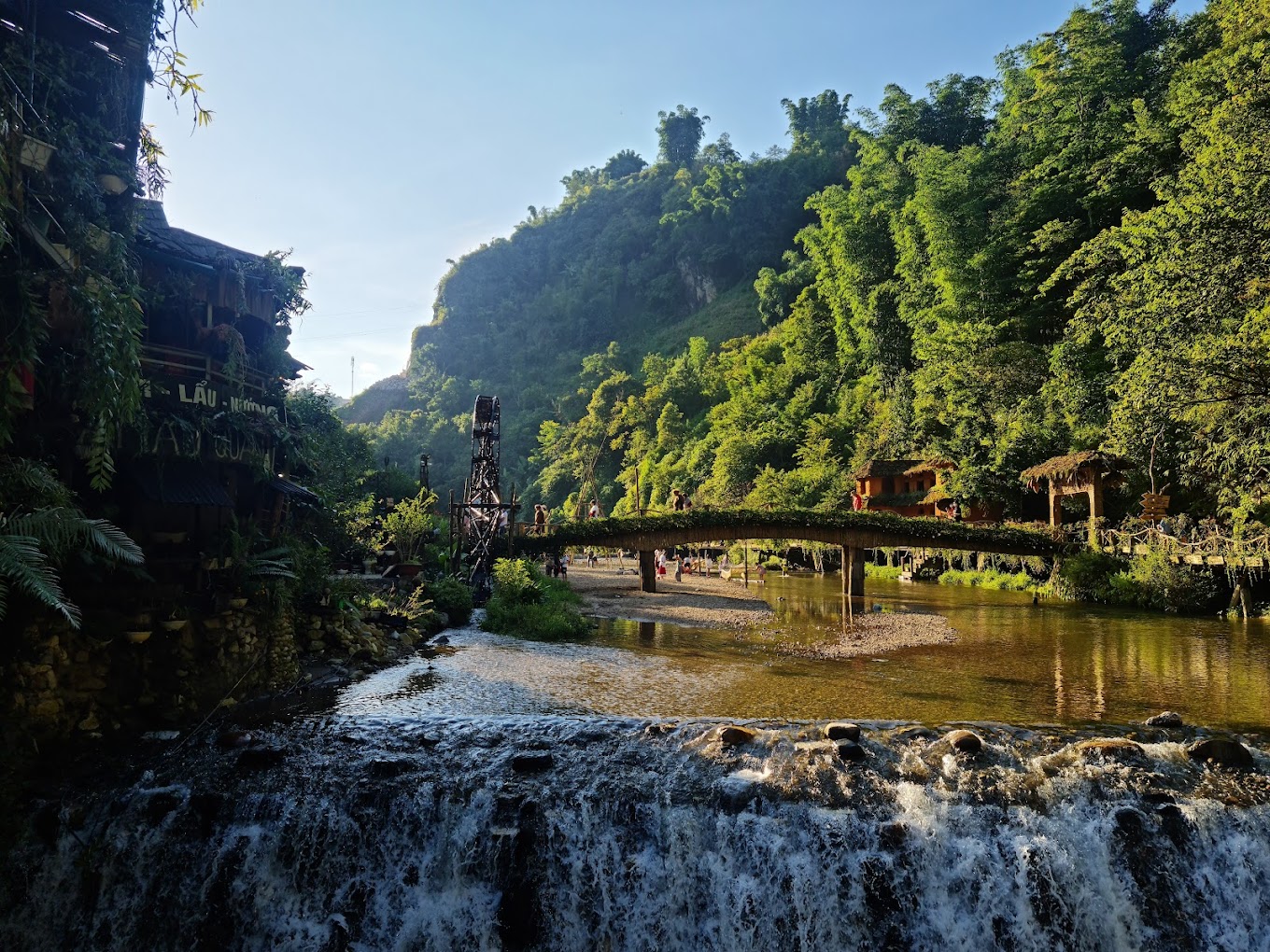Trekking in Sa Pa has become extremely popular among young people recently. Not only domestic tourists but also international travelers are very fond of this type of tourism. However, without thorough preparation and necessary experience, you may quickly feel discouraged when participating in trekking. Therefore, the following experiences will certainly be very useful for you.

1. The best time for trekking in Sapa
The perfect time to go trekking in Sapa depends on various factors such as weather conditions and personal preferences. However, based on the experiences of many trekkers in Sapa, the best times to explore this region are:
- September – November: This is the main rice harvesting season, and it’s ideal for cloud hunting. The weather in Sapa during this period is typically cool and not too rainy.
- January – March: This is the time when the forests burst into bloom with various flowers across the plateau. The weather during this period is usually cool and chilly. Additionally, many festivals are held during this time, adding an interesting highlight to your trekking journey.
It’s important to note that from May to August, Sapa experiences its rainy season. During this time, the trails can become slippery and challenging to navigate due to heavy rains. This could make the journey more difficult and potentially hazardous. Therefore, those planning to trek during this season should carefully consider and prepare appropriate plans to ensure safety and the best experience for their trip.
2. How to get to Sapa?
Sapa, nestled in the Northwest of Vietnam, presents travelers with a challenging journey due to the country’s long and narrow shape. This geographical reality makes traversing Vietnam a demanding task. Should you find yourself in Ho Chi Minh City with aspirations to reach Sa Pa, prepare for a lengthy expedition. When trekking in Sapa is a priority, strategic planning becomes essential. A common approach is to make a detour while in Hanoi, where various transportation options to Sapa are available.
By Sleeper Train

A train operates daily from Hanoi to Sapa. Travelers can enjoy the comfort of a 4-person sleeping train room, ensuring a relaxed and well-rested arrival in the northwest of Vietnam. Upon reaching the Lao Cai train station, it’s merely an hour’s journey by taxi or bus to Sapa. Trains offer a safer alternative to bus travel or personal motorcycles. Night trains from Hanoi to Lao Cai feature Soft Sleeper compartments, each accommodating four cozy beds, with two beds stacked upon each other. Lower beds typically incur slightly higher costs than upper ones. For those seeking privacy, reserving an entire compartment is possible, albeit at the expense of booking tickets for four individuals, totaling around 1.5 million Dong. Booking Sapa train tickets is conveniently facilitated online, with portals like Bao Lau offering tickets for all train routes in Vietnam at standard rates. Simply input departure and destination points into the website’s search function to access available connections. Alternatively, trekking companies can also assist with ticket arrangements, with prices ranging from 35 to 40 USD per trip.
By Luxury Train
Moreover, special tourist carriages operated by private entities such as Livitrans or Oriental complement the regular trains from Hanoi to Sapa. Initially boasting superior amenities compared to standard Vietnamese Railway sleeping cars, these coaches were regarded as luxury trains. However, recent observations suggest a shift in this perception, with tourist trains often comprising refurbished state railway sleeping cars. Whether the additional expense justifies the purported luxury remains subjective.
By Express Bus
Traditionally, trains were favored over buses due to the latter’s arduous and protracted journey. However, 2014 marked a significant change with the inauguration of the Hanoi – Lao Cai Expressway. This modern highway offers direct access from Hanoi to Lao Cai, the city at the foot of Sapa Mountain and terminus for the train journey. The express bus to Sapa now provides travelers with various comfort levels, including Seated Bus, Sleeping Bus, or Limousine Luxury Bus, operating at different times throughout the day. Advance booking options are available through trekking companies, with fares averaging around 25 USD per trip.
3. What to bring

Before embarking on your trekking journey in Sapa, it’s crucial to prepare necessary equipment and anticipate potential situations that may arise. Since trekking routes often traverse remote and inaccessible areas with limited access to shops or services, you need to be self-sufficient. Here is a list of essential items to bring along:
- Trekking gear:
- Sturdy hiking boots with good ankle support
- Comfortable and moisture-wicking clothing (long-sleeved shirts, pants, socks)
- Waterproof and windproof jacket
- Hat or cap for sun protection
- Sunglasses with UV protection
- Backpack essentials:
- Lightweight and durable backpack
- Sufficient water (hydration bladder or water bottles)
- High-energy snacks (nuts, dried fruits, energy bars)
- Personal medication and first aid kit
- Map or GPS device (with offline maps if possible)
- Portable charger for electronic devices
- Weather-related items:
- Lightweight and quick-drying towel
- Sunscreen with high SPF
- Insect repellent
- Rain cover or poncho for unexpected rain showers
- Extra layers for cold weather (fleece jacket, thermal underwear)
- Safety equipment:
- Headlamp or flashlight with extra batteries
- Multi-tool or Swiss Army knife
- Whistle for signaling in emergencies
- Basic repair kit for gear and equipment
- Personal items:
- Identification documents (passport, ID card)
- Cash (in local currency) for emergency use or purchasing items in remote areas
- Mobile phone with emergency contact numbers and offline maps downloaded
- Camera or smartphone for capturing memorable moments
4. The most prominent trekking routes in Sapa
Currently, there are several trekking routes in Sapa that are well-known and prominent. These trekking routes not only offer stunning scenery but also allow travelers to explore the culture and life of the local people.
4.1. Sapa – Cat Cat Village – Sin Chai Village

- Route: Sapa – Cat Cat Village – Sin Chai Village – Sapa
- Duration: Day trip
- Distance: 7km
- Difficulty: Easy
Starting from the center of Sapa (Old Church), travelers can walk to Cat Cat Village, about 2.2km away. Upon reaching Cat Cat Village, visitors need to purchase tickets and begin the trekking journey (mostly through terraced fields). From Cat Cat Village, continue along the Muong Hoa Valley for 3km to reach Sin Chai Village. This village retains its pristine beauty as it is less visited by tourists compared to Cat Cat Village. At Sin Chai, visitors have the opportunity to admire traditional wooden houses made of Po Mu wood before returning to the center of Sapa. This route is relatively easy and suitable for beginners in trekking.
4.2. Sapa – Love Waterfall – Silver Waterfall – Y Linh Ho – Ta Van Village
- Route: Tram Ton Station – Love Waterfall – Silver Waterfall – Cat Cat Village – Y Linh Ho – Lao Chai – Ta Van Village – Sapa
- Duration: 2 days 1 night
- Distance: 20 – 30km
- Difficulty: Moderate
On the first day, travelers will move from Tram Ton Station to Love Waterfall and Silver Waterfall before staying overnight at a homestay. Around 9:30 am, start by riding a motorbike to Tram Ton Station, then move about 1.1km along the Vang River to Love Waterfall. After visiting, you can move to Silver Waterfall by motorbike, then descend to the Muong Hoa Valley to Cat Cat Village. After having lunch here, move to a homestay in the village for an overnight stay. On the second day, after waking up early and having breakfast, return to Sapa, passing through Y Linh Ho and Ta Van Village.
4.3. Sapa – Ta Phin Village – Ta Giang Phinh Village
- Route: Suoi Ho – Ma Tra – Ta Phin – Phin Ho – Lu Khau – Suoi Thau – Kim Ngan – Ta Giang Phinh
- Duration: 3 days 2 nights
- Distance: 43km
- Difficulty: Hard
On the first day, trek from Sapa Old Church to Ma Tra village, where you can admire the beautiful terraced fields before resting in Ma Tra village and then continuing to Ta Phin Village. On the second day, continue to Phin Ho Village, passing through hills, terraced fields, valleys, and lush forests. Finally, return to Sapa after visiting Ta Giang Phinh Village.
4.4. Fansipan Summit Trekking Experience
- Route: Tram Ton Pass – overnight at 2800m – Fansipan Summit
- Duration: 2 days 1 night
- Distance: 11.2km
- Difficulty: Hard
After reaching Tram Ton Pass, start climbing up Fansipan Mountain, where you can admire the magnificent scenery of the Northwest mountains. Around 4 pm, arrive at the overnight campsite at 2800m, set up tents, prepare dinner, and spend the night. The next morning, wake up early to catch the sunrise and continue the trek to the summit of Fansipan. It takes about 1.5 hours from the overnight campsite to the summit, and due to the thin air, travelers can take a train to the top. It’s advisable not to overexert yourself and save energy for the descent back to Tram Ton Pass and return to Sapa.
How Much Does Trekking in Sapa Cost?
The most expensive part of traveling in South-East Asia is your plane ticket. Traveling around in Vietnam is affordable and so are food and accommodation. Your trek will definitely not be the biggest expense during your travels, however, it will be one of the most memorable ones. Your trek will cost anything between 50 and 100 USD per person. This equals about 1,430,000 VND to 2,860,000 VND..
Are you ready to explore the trekking journey in Sapa with Jackfruit Adventure?
Above are some specific trekking in Sapa that have been compiled. If you don’t have enough strength or experience to experience it on your own, you can also choose from pre-organized trekking tours, accompanied by a guide. Let your journey to explore this land of fog become more meaningful when you witness with your own eyes the terraced fields and the unique culture of the ethnic minorities here!
If you are in Saigon, don’t miss the chance to try our Ho Chi Minh City Cycling Tour to explore the city in the most authentic way.




